Introduction
Our review of Ubiquiti’s UAP-AC back in July found its 5 GHz performance wasn’t where it should be compared with other AC1750 class products. But Ubiquiti said it had some performance tweaks baked into its 3.1.4 firmware that would make things right. So once Ubiquiti released it (as beta), I put it right into retest.
I had already shipped the UAP-AC on to Doug for his UniFi 3.0 review, so Ubiquiti sent another for the retest. I first upgraded it with 3.1.4.2257 firmware then set Channel 6 and 20 MHz mode for 2.4 GHz and Channel 153 and 80 MHz bandwidth mode for 5 GHz. The test client was connected using WPA2/AES encryption.
The closest surface of the router was positioned 8" from the chamber antennas in all test positions. The 0° position had the side opposite the Ethernet connectors facing the chamber antennas.
Benchmark Summary
The retest Benchmark Summary below shows the average of throughput measurements made in all test locations. The 2.4 GHz values in the summary above correspond to the 2.4 GHz 3-stream values (20 MHz B/W) and the 5 GHz values above correspond to the 80 MHz B/W – 3 stream values.
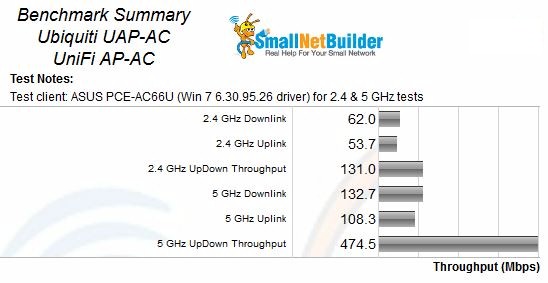
Ubiquiti UAP-AC Benchmark Summary – Retest
Compared to the results in the last review’s benchmark summary shown below, the 2.4 GHz values all decreased. 5 GHz values, however, moved in the desired direction—upward.
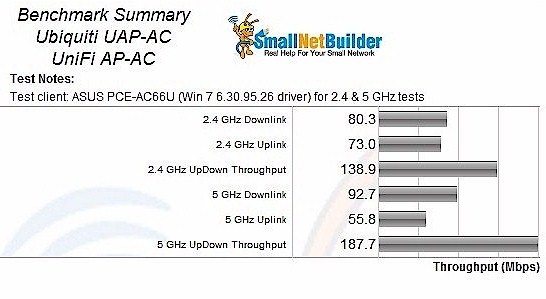
Ubiquiti UAP-AC Benchmark Summary – Original Test
Performance Comparison
Since the UAP-AC is the lone AC1750 class access point we have in the charts, I chose the D-Link DIR-868L router to compare last time. So I’ve updated the comparison plot from the original review to add the retest results.
The 2.4 GHz downlink profile shows generally lower throughput for the retested UAP-AC in the 0 to 30 dB attenuation range. Note that both runs have a throughput dip in the single-digit attenuation range. But the retested UAP-AC has some big ol’ throughput drops at the attenuation values that the original UAP-AC delivered its peak throughput. Note that after 39 dB of attenuation, i.e. as signal levels drop, all three products are pretty much the same.
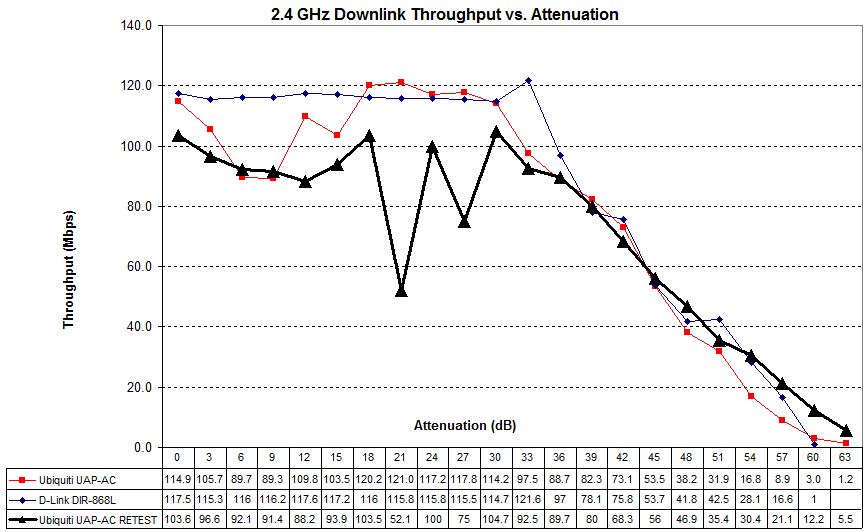
2.4 GHz Downlink Throughput vs. Attenuation
The 2.4 GHz uplink plot shows the retested UAP-AC’s throughput lagging behind the original’s and the D-Link’s up to around 36 dB, where once again it tracks closely with the other products.
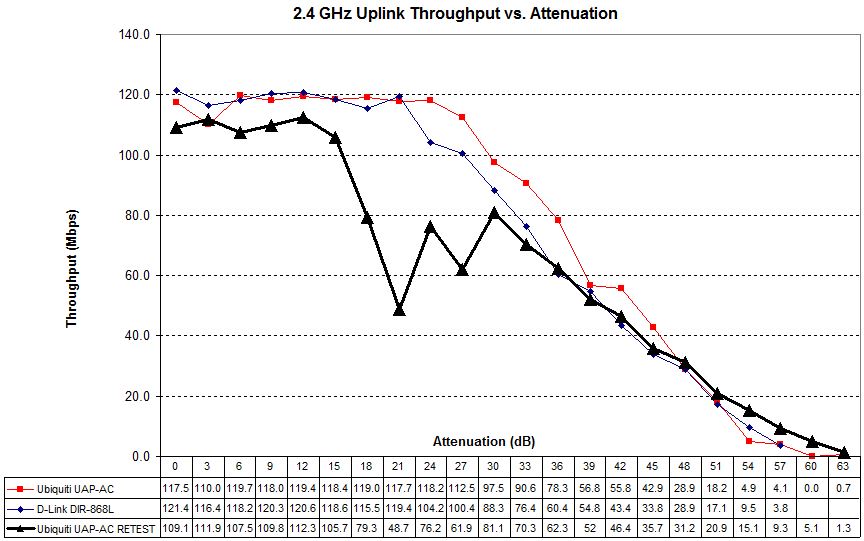
2.4 GHz Uplink Throughput vs. Attenuation
The UAP-AC’s 5 GHz throughput profile shows definite improvement over the original, especially in range. But it still lags behind the D-Link throughput the signal range.
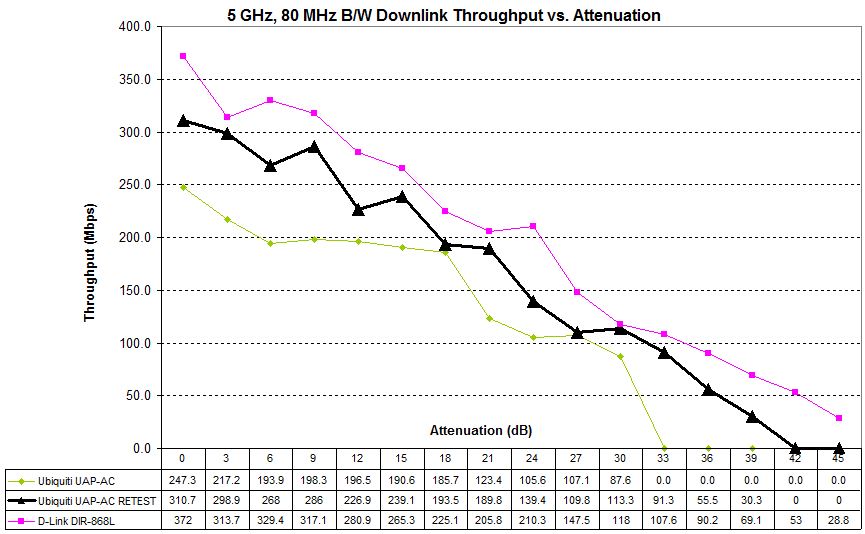
5 GHz Downlink Throughput vs. Attenuation
5 GHz uplink shows an even larger improvement over the previous test. But performance still lags behind the D-Link except for a few points along the profile.
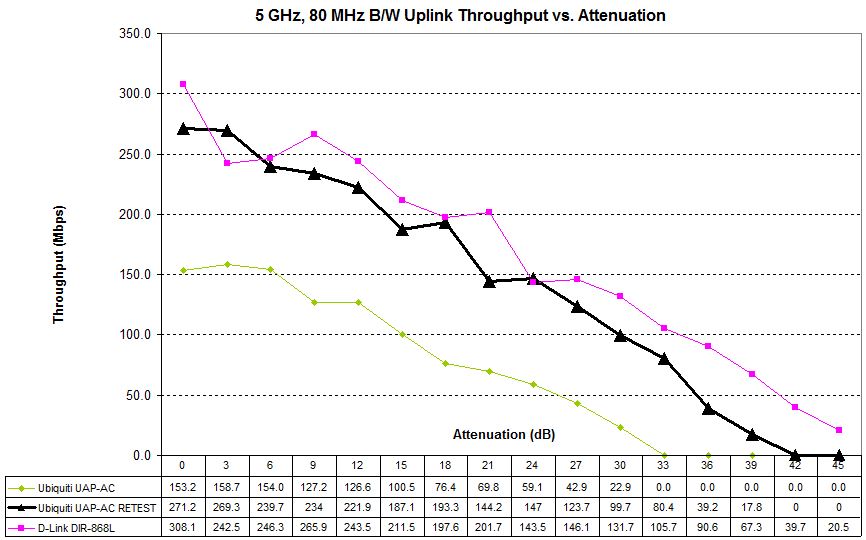
5 GHz Uplink Throughput vs. Attenuation
Looking at all four test runs for 2.4 GHz downlink plot shows throughput dropped to single digits and even 0 Mbps during three out of four runs at attenuations in the 20 dB range. At no time did the client and AP disconnect, however. If they had, the plots would have flatlined at 0 Mbps.
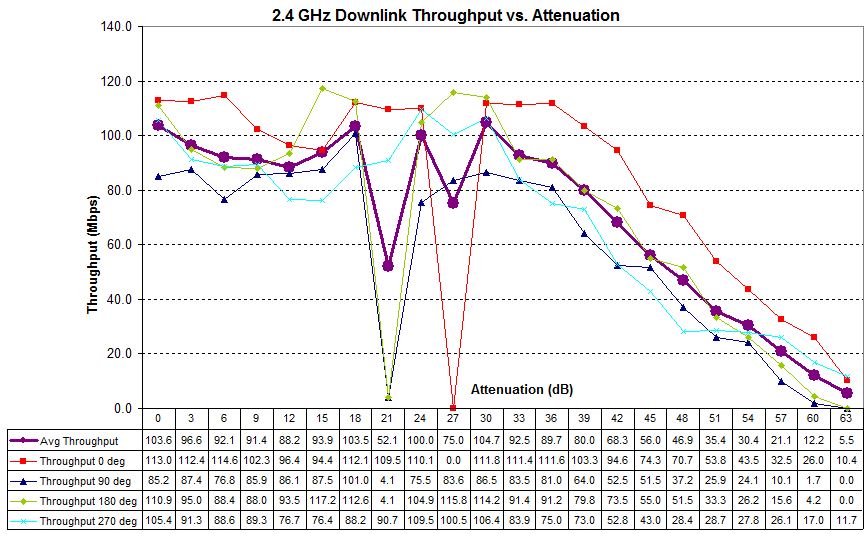
Four test runs – 2.4 GHz downlink – Ubiquiti UAP-AC
The 2.4 GHz uplink plots show similar behavior.
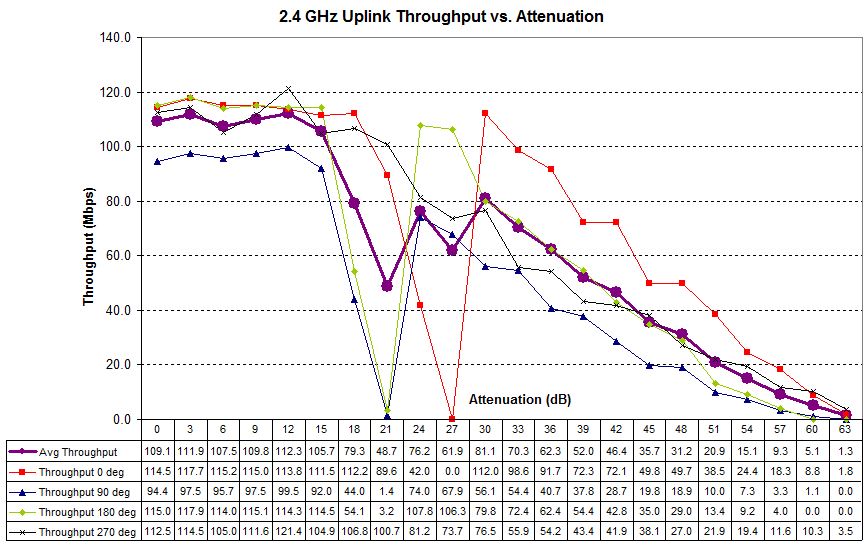
Four test runs – 2.4 GHz uplink – Ubiquiti UAP-AC
The 5 GHz downlink runs were much better behaved. But they once again show worst performance in the 270° test position.
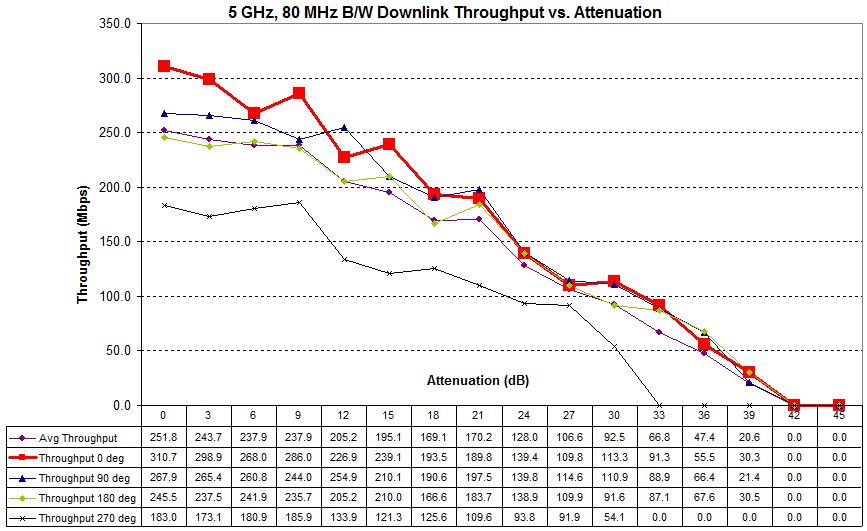
Four test runs – 5 GHz downlink – Ubiquiti UAP-AC
And the same for uplink. This indicates a definite 5 GHz directional preference, at least in the short distances of our test chamber. It’s doubtful you would see this in normal use.
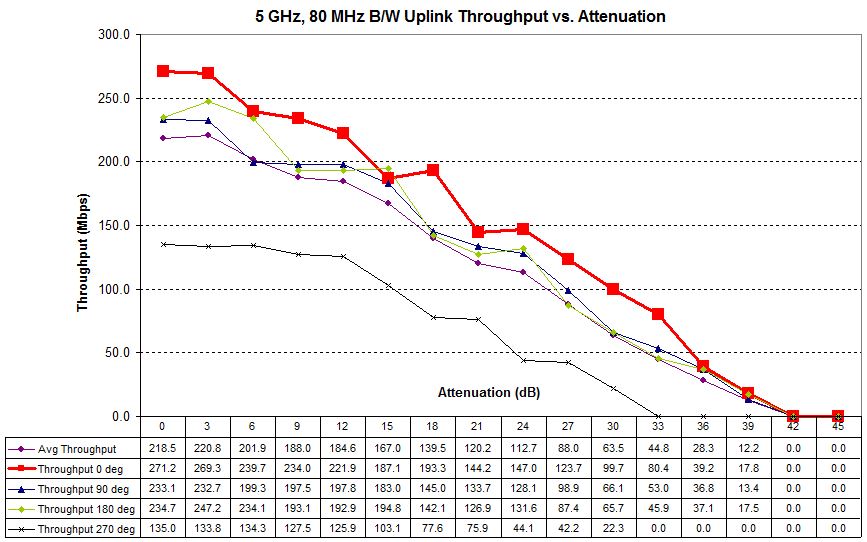
Four test runs – 5 GHz uplink – Ubiquiti UAP-AC
Closing Thoughts
Given Ubiquiti’s request for a retest and my desire to do this only once, I shared all this data with Ubiquiti before review. They even sent a second UAP-AC for retest, which produced results essentially the same as those published here. Their opinion is that the 2.4 GHz problems are most likely a manufacturing issue that they are looking into.
So you may wish to wait a bit for Ubiquiti to iron out its manufacturing kinks and move 3.1.4 into release from beta before coughing up the $300 the UAP-AC currently commands.
